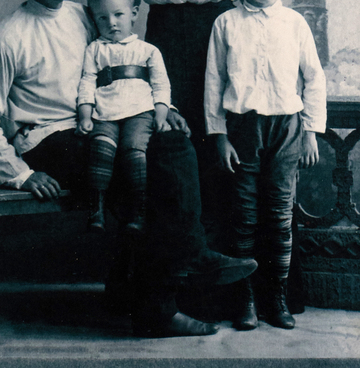The exhibition of the Penza Literature Museum has a photographic portrait of the writer Fyodor Vasilyevich Gladkov, taken in Tiflis in 1905.
Fyodor Gladkov (1883–1958) was born into a family of Old Believer peasants in the village of Chernavka, Saratov Governorate (now Penza Oblast). The future writer was early accustomed to labor and taught literacy. From childhood, Gladkov was distinguished by curiosity and love for nature, which was later vividly reflected in his famous lyrical work “Birch Grove.”
“I loved the village and its outskirts very much. Even now, when I remember it, everything is flooded with sunshine, with green forests seen behind the fields. In the church square, over the green meadow, there are shimmering waves of heat. On both sides of the river, with snow-white sand on the banks, hills are rising abruptly, and on the steep banks, in the rocks, cold springs are ringing,” Fyodor Gladkov admitted later.
Fyodor Gladkov received his primary education in a rural school, then worked part-time in a store, as an apprentice in a drugstore, and as a typesetter in a printing house. He continued his education by enrolling in a county high school, after which he received the title of elementary school teacher. From 1902, he taught in the Trans-Baikal region. In 1905, Gladkov moved to Tiflis to enter the Teachers’ Institute. During this period, he became close to Bolshevik revolutionaries. At the same time, his story “A Black-Hundredist” was published, shortly after which the writer was arrested and exiled for a few years.
Fyodor Gladkov’s early works were mostly published in provincial newspapers. With the outbreak of the Civil War, the writer volunteered to join the Red Army. In 1920, he was appointed editor of the Krasnoe Chernomorye newspaper in Novorossiysk. In 1921, he was transferred to work in Moscow. In the 1920s, Fyodor Gladkov wrote a number of works: the story “The Fiery Horse”, the plays “Windfallen Trees” and “Mob”. In the same period, he wrote the novel “Cement” which was highly appreciated by Maxim Gorky and brought the author fame.

